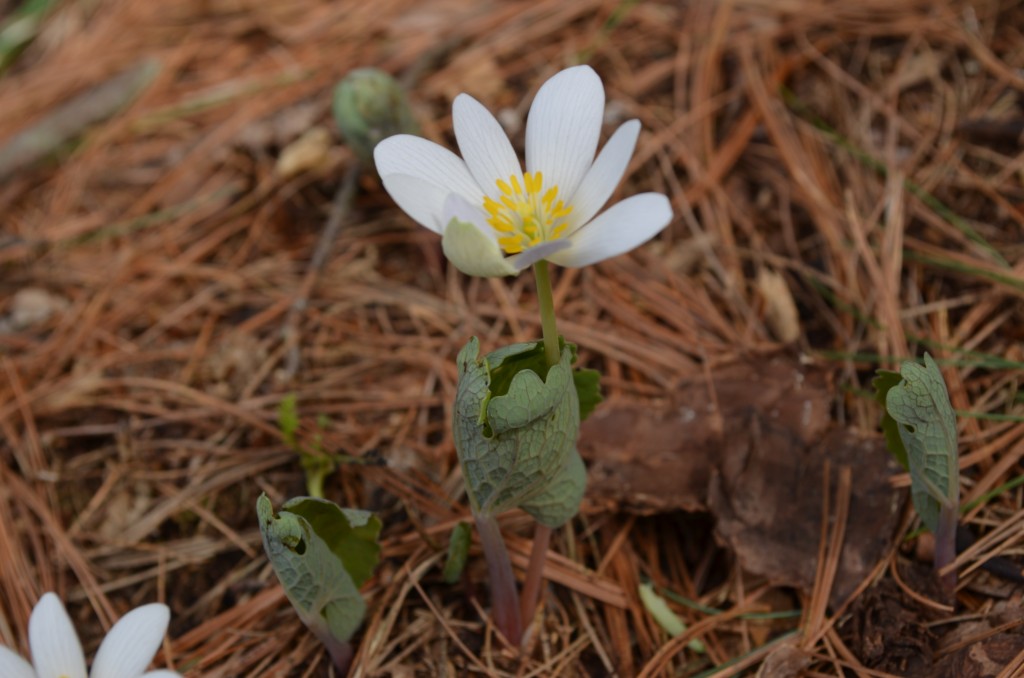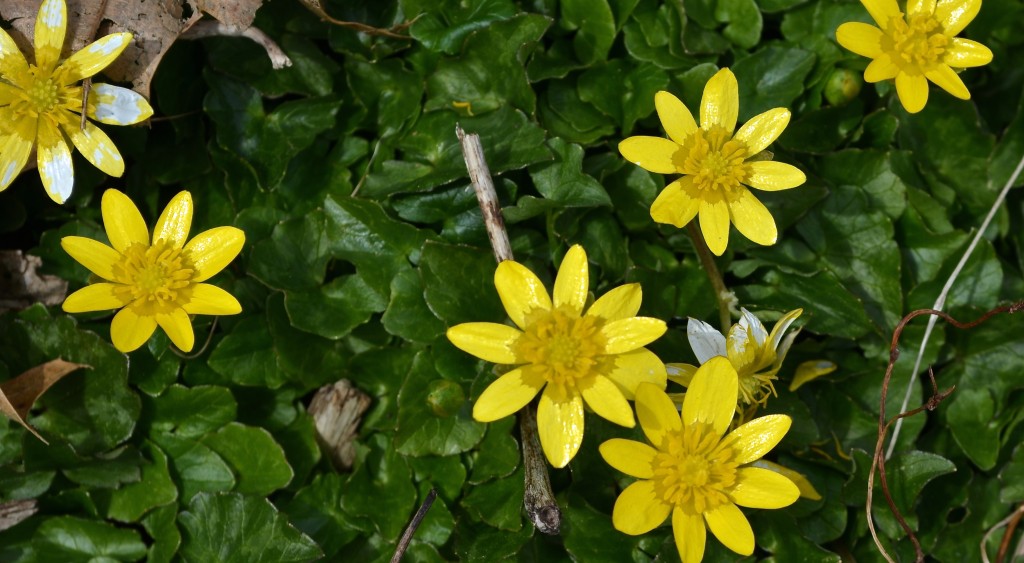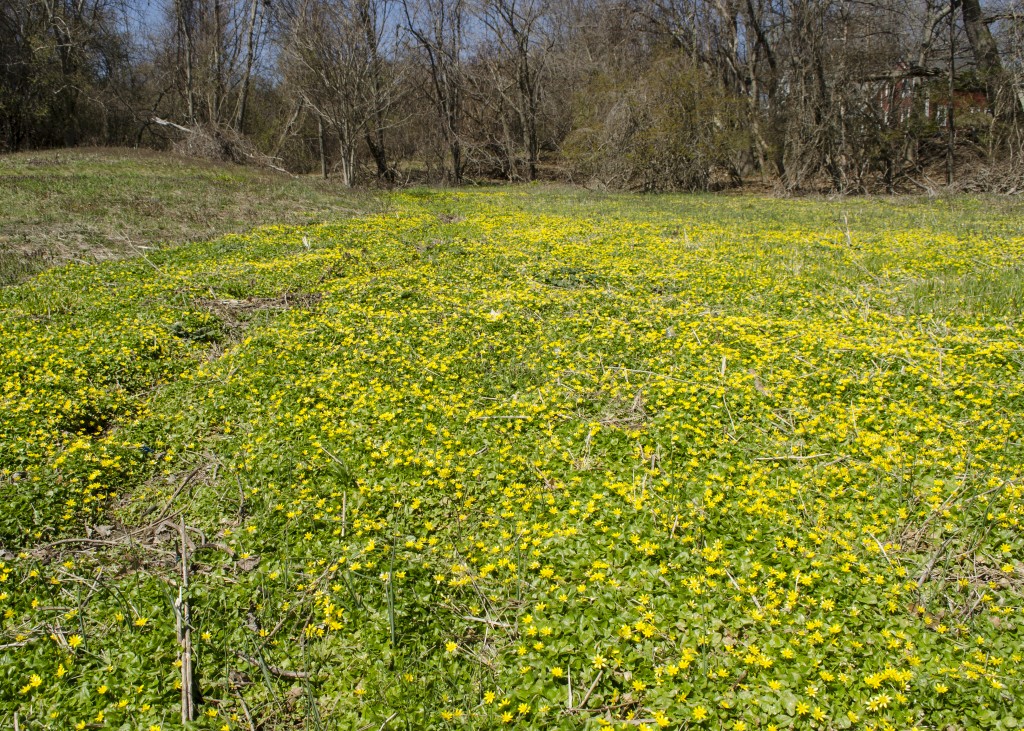 The first showy spring flower was Lesser Celandine. (Shot April 20.) There is an occasional brook at Centennial Park in Wellesley, MA, that is enough moisture in this bit of dry valley that a big field of yellow erupts there in spring.
The first showy spring flower was Lesser Celandine. (Shot April 20.) There is an occasional brook at Centennial Park in Wellesley, MA, that is enough moisture in this bit of dry valley that a big field of yellow erupts there in spring.
The blossoms follow the sun during the day and close in cloudy or cold weather. The name Celandine is derived from the Greek word for swallow (chelidon), because the early flowering time was also when the swallows arrived (and the flowers faded when they left). It is not native, found throughout Europe and west Asia. Eight petals and leaves that resemble wild ginger. Don’t eat it: “Unsafe in any quantity.” Buttercup family.
Lesser Celandine (Ranunculus ficaria)

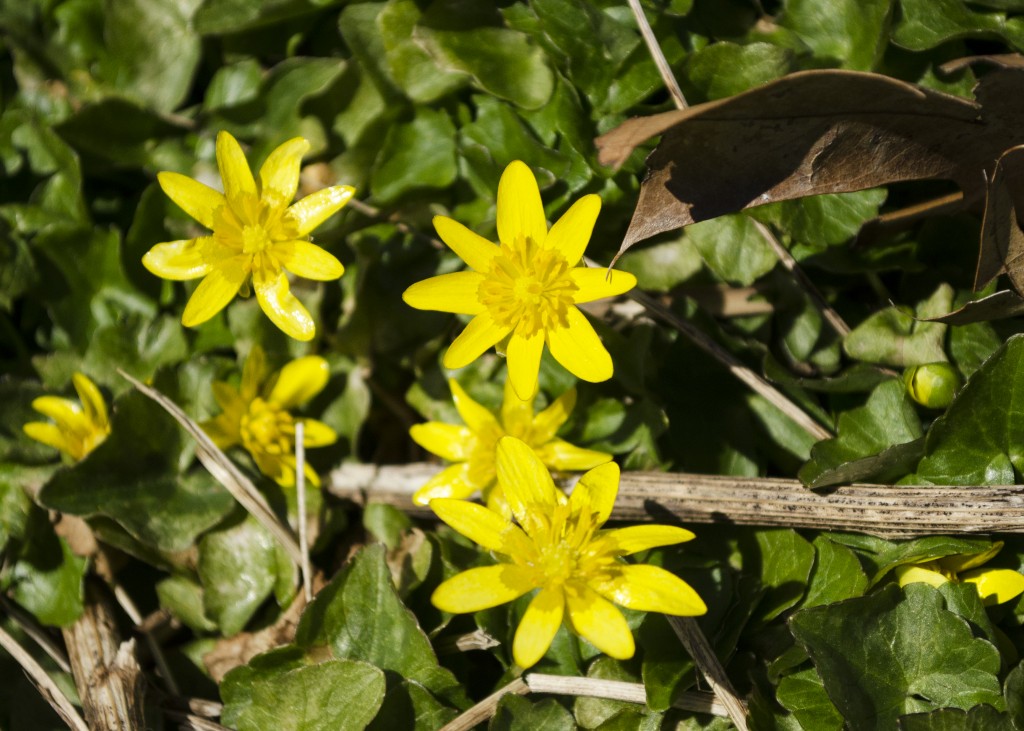
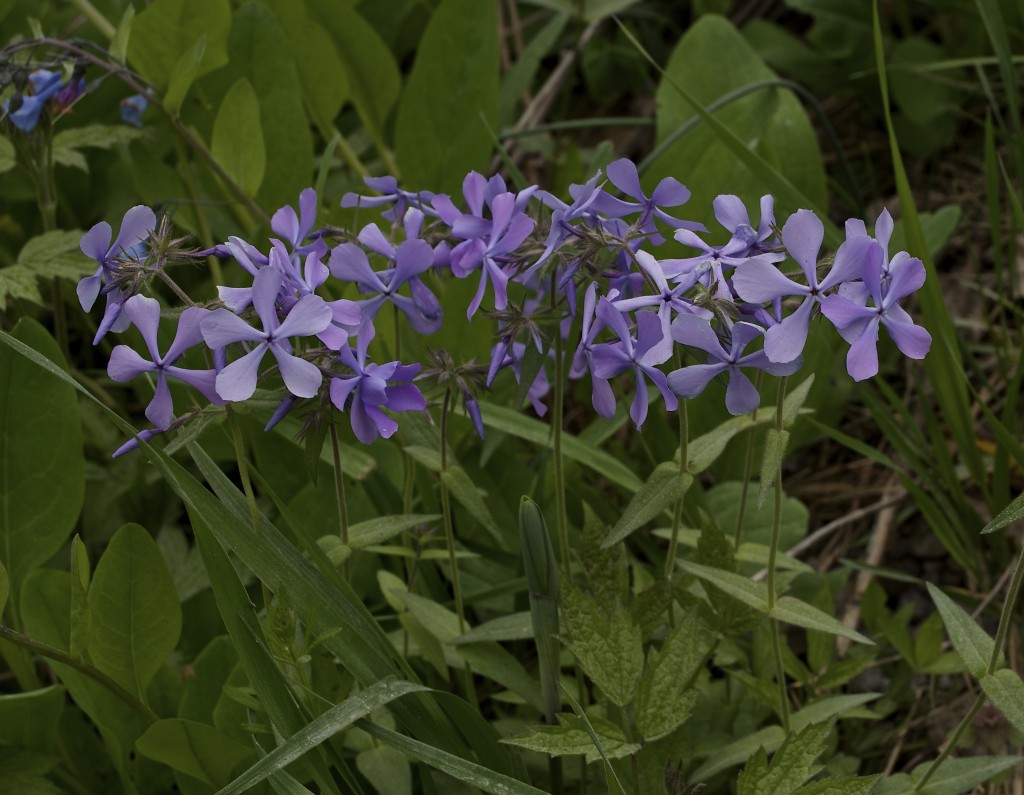
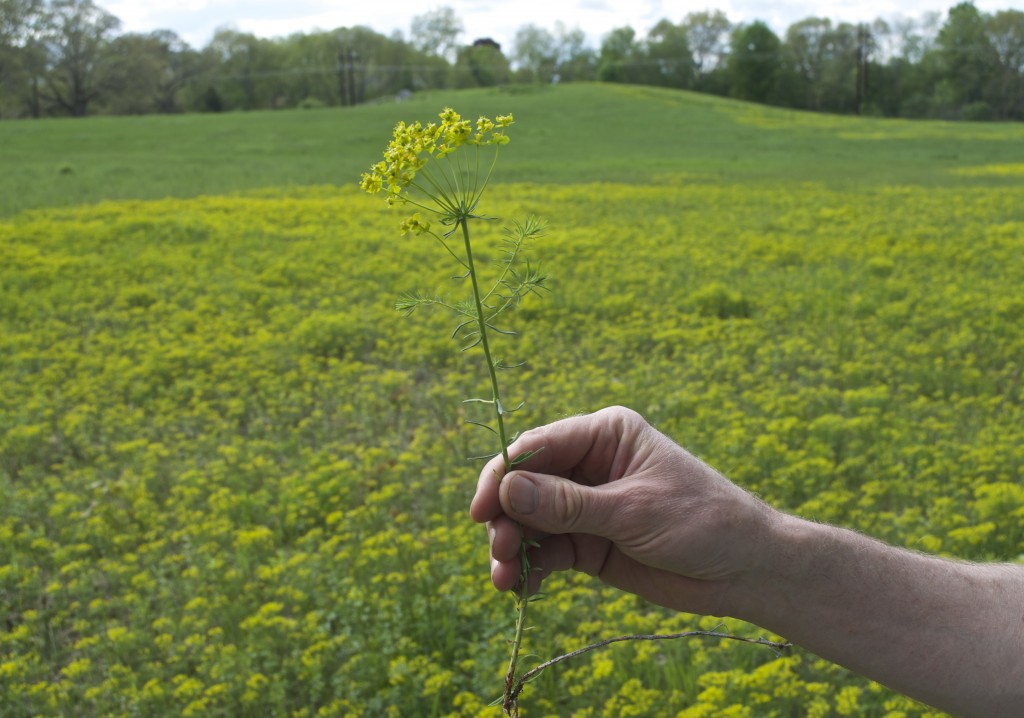
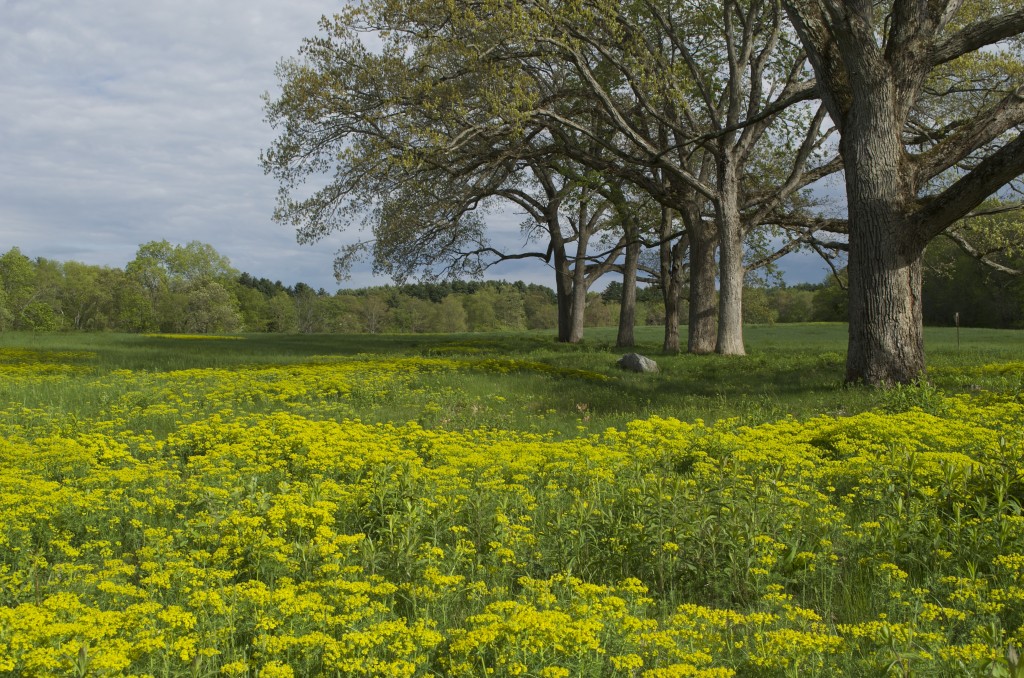
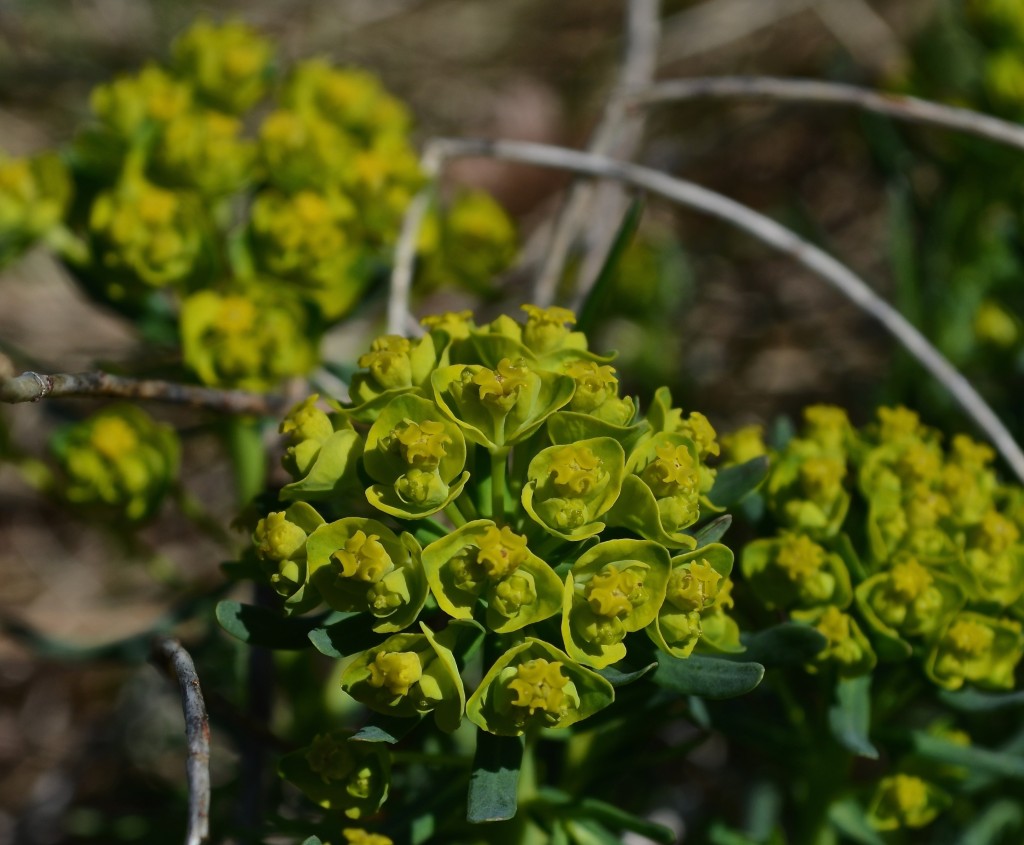 A hardy groundcover — tolerates poor soil, dry conditions, deer, rabbits, pollution… Has a milky, poisonous sap that repels herbivores. Forms a dense fluffy blanket about a foot tall. Tiny flowers that start lime-green and yellow, and age to red. Has narrow-leaved foliage reminiscent of cypress trees, hence the name cypress spurge. (The common name “spurge” comes from the Middle English/Old French word “epurge”, meaning “to purge”, because these plants were used as purgatives. (Poinsettias are spurges!) Native to Europe, introduced to North America in the 1860s as an ornamental, and is now a harmful invasive that has really colonized Charles River Peninsula.
A hardy groundcover — tolerates poor soil, dry conditions, deer, rabbits, pollution… Has a milky, poisonous sap that repels herbivores. Forms a dense fluffy blanket about a foot tall. Tiny flowers that start lime-green and yellow, and age to red. Has narrow-leaved foliage reminiscent of cypress trees, hence the name cypress spurge. (The common name “spurge” comes from the Middle English/Old French word “epurge”, meaning “to purge”, because these plants were used as purgatives. (Poinsettias are spurges!) Native to Europe, introduced to North America in the 1860s as an ornamental, and is now a harmful invasive that has really colonized Charles River Peninsula.